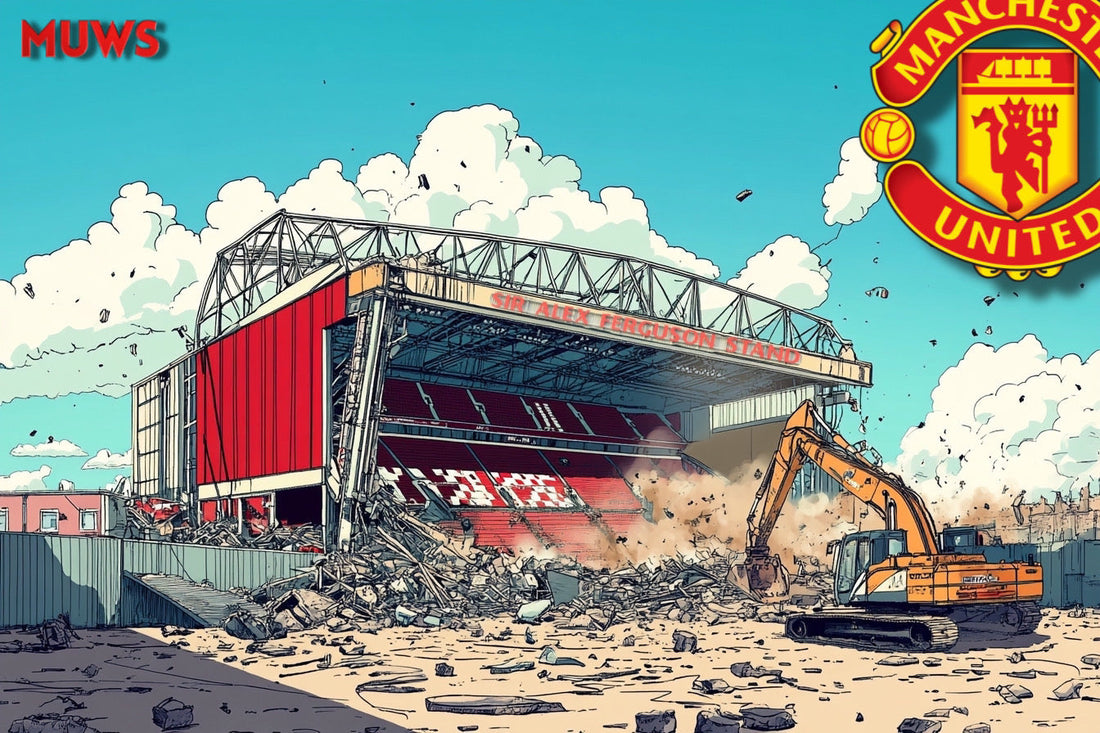
Old Trafford: How Selling Pieces of History Could Fund the Future
Share
Manchester United are on the brink of a new era. With plans to move into a state-of-the-art stadium designed by the visionary of modern architecture that is Lord Norman Foster, the club faces a monumental decision about the future of Old Trafford. While leaving behind the “Theatre of Dreams” will be an emotional moment for fans, there’s a unique opportunity for the club to turn nostalgia into much-needed revenue by selling parts of the iconic stadium.
United’s financial struggles are well documented. Years of mismanagement, mounting debt, and underwhelming performances on the pitch have left the club in a precarious position. With a new stadium expected to cost billions, the club needs to find creative ways to generate funds.
Selling pieces of Old Trafford to fans would be a perfect way to do this. Other clubs have already shown how valuable nostalgia can be—West Ham sold seats, signs, and even bits of turf from Upton Park before moving to the London Stadium, while Arsenal did the same with Highbury. Barcelona also sold parts of their stadium, Camp Nou, to raise funds in 2023 as part of their financial recovery strategy. They offered items such as seats, pieces of the pitch, and other memorabilia to fans after beginning the stadium’s renovation. This was done to generate extra revenue while they played at the Estadi Olímpic Lluís Companys during the reconstruction. United, with its enormous global fanbase, could take this concept to an entirely new level.

So what could Manchester United sell? If Old Trafford is demolished, nearly every piece of the stadium could be turned into memorabilia.
Here are some of the most sought-after items fans would likely pay top dollar for:
• Seats – Imagine having one of the famous red seats from Old Trafford in your home. Whether from the Stretford End or the Sir Alex Ferguson Stand, these would be a must-have for collectors.
• Bricks from the stadium – Old Trafford’s walls have witnessed some of football’s greatest moments. Selling engraved bricks would allow fans to own a physical piece of history.
• Signs and turnstiles – Iconic signs, such as those outside the dressing room tunnels or around the Stretford End, would be highly prized. Even the turnstiles could be turned into unique collector’s items.
• Sections of the pitch – United could sell pieces of the sacred Old Trafford turf in display cases, much like Barcelona has done during their stadium renovations.
• Letters from Stands such as the ‘Stretford End’ and the ‘Sir Alex Ferguson Stand’ – These could fetch a fortune in an auction, as every fan would love to own a piece of the club’s greatest era.
With over a billion Manchester United fans worldwide, demand for Old Trafford memorabilia would be enormous.
Hypothetically speaking, if the club sold 50,000 seats at £200 each, that alone would generate a cool £10 million in revenue. Adding sales of bricks, signs, and turf, United could easily raise tens—if not hundreds—of millions to offset the costs of their new stadium.
Leaving Old Trafford after 115 years will be a bittersweet moment. It’s a stadium filled with memories of title wins, classic European nights, and Fergie Time winners. Not everyone is happy at the thought of moving away from the Red Devils long term home. A large part of the fan base are disappointed that the released concept images for the new 100,000 capacity stadium bear little resemblance to the iconic Theatre of Dreams. But if United handles this transition correctly, they can ensure that Old Trafford’s legacy lives on in the homes of fans across the world.

Selling pieces of the stadium wouldn’t just help United financially—it would allow supporters to keep a part of the club’s history forever. And in doing so, it might just help fund the club’s New Trafford, where one era ends and a new one begins for Manchester United.
